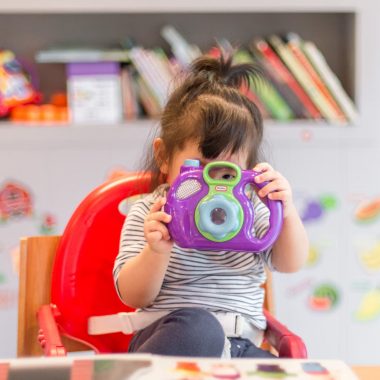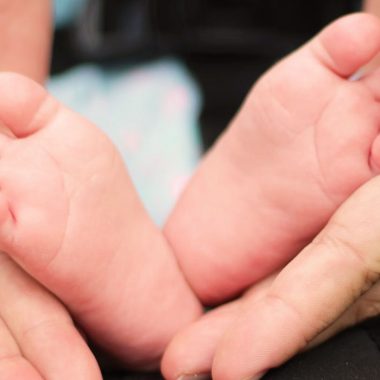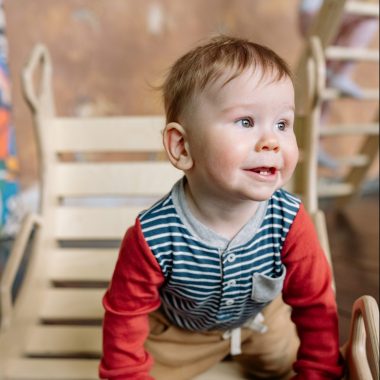Crawling is considered a huge milestone in baby development. “When do babies crawl?” is perhaps the first milestone that new parents look forward to. The common perception is that all children begin crawling around the same age. However, that is nothing more than a myth. Just like every other developmental milestone, every child reaches crawling at a different age. In fact, some children skip the crawling stage entirely.
So, when do babies start crawling? While crawling is typical in almost all children, you need not worry if your child is not crawling. Not all children agree on the fact that crawling is a fundamental step in their growth cycle. Even though there is no definitive age for crawling, it is important to what to expect. It also helps to learn how to encourage your baby to crawl.
ALSO READ: Signs of a Smart Baby – Language Development
For parents, crawling marks a significant growth milestone. That is perhaps why all parents look forward to the moment their child begins to move around on their own. One of the many joys of parenting includes observing and guiding your baby to master the skill of crawling. You will definitely vividly remember the moment that your baby first began to crawl.
This article will detail the different ages that babies begin to crawl. We will also discuss the many different types of crawling movements and how to encourage your baby to begin crawling.
ALSO READ: The Ultimate Guide for First Time Dads
How early do babies crawl?
Some babies start crawling as early as 6 months. The average is around 8 or 9 months. This is around the time that babies start creeping and crawling. However, some children start as late as 11 months as well.
Interestingly, tummy time really helps babies with crawling. It strengthens the upper body and exercises the neck which really aids your baby to transition into crawling. Around 5-6 months, you can begin encouraging your child to sit up by propping them against pillows and allowing them to look around.
Can a baby crawl at 3 months?
Around 50% of children begin crawling at the age of 8 months. The remaining 50% either start earlier at around 6 months or begin as late as 11 months. And of course, some babies skip the crawling part altogether (although this is not as common).
ALSO READ: How to be a Good Mother? A Guide to Perfect Parenting
Types of baby crawling:
Not all babies crawl the same. In fact, there are a lot of different types of baby crawling. Some common styles include commando-style shuffling or scooting (bottom shuffling).
- Belly crawling/Commando crawling: This type of crawling resembles commando-style crawling. Your baby will lay down on the floor fully and wiggle their way around in an attempt to move.
- Hands-and-knees crawling: This is perhaps the most common and typically expected type of crawling.
- Hands-and-feet crawling: This type of crawling will have your baby looking like a pyramid. Not to worry, babies who crawl with their hands and feet transition to walking quicker.
ALSO READ: Toilet Training Step-By-Step: One Poop at a Time
If your baby is not displaying signs of crawling, chances are they are making use of other types of movement. This can look like:
- Step scooting: This type of movement occurs with the baby sitting down. They will shift their weight onto both hands and only move one leg. Step scooting is also known as a tripod shuffle.
- Rolling: This type of movement is typical in babies who are in the early stages of crawling. They will move their entire body as opposed to using their limbs to move.
- Cruising: Also known as assisted movement, babies who cruise make use of handholds. Be it a coffee table or the couch, babies cruise by holding onto nearby objects to assist their movement.
- Bottom shuffling: This type of movement is also called scooting. Again, babies will scoot while sitting down and dragging their bottom across the floor to reach nearby objects.
Can I encourage my baby to crawl?
Yes, you absolutely can. If you feel like your child is not easing into crawling on their own, there are a few things you can do to encourage them. One of the most popular methods to adopt is leaving your child to play on the floor. It should be a safe area that is away from any stairs.
ALSO READ: Potty Training Toddlers: When To Start and Best Tips on Doing it Right
You can also get down on the floor with them and coax them with smiles and talk. You can also place your baby’s favorite toys just out of reach. They will instinctively attempt to move towards them.
- Tummy time: This activity is best done together. Tummy time refers to the act of placing your baby face-down on their tummy. This is typically incorporated during daily playtime. You can add tummy time in different areas, both indoors and outdoors. Try to also alternate between different textures and materials such as a mat, a blanket, the garden, and so on.
- Baby proofing: It is important to make your home safe for your child to wander around in. As your baby grows older and becomes more mobile, it is important to childproof your home. Lock any cabinets that are opened easily. Make sure that household appliances and cleaning supplies/equipment are locked away well out of reach. You should also keep the basement locked and make use of safety gates to ensure your child does not wander into areas that are unsafe.
- Encourage reaching: If you keep handing everything over to your child or keep everything within their reach, they will not be motivated to move. You can use your baby’s favorite toy or object or even just yourself. Keep things just out of reach so your child attempts to reach over and grab them.
- Avoid walkers: While most parents assume that baby walkers encourage walking, that is actually not true. You should attempt to encourage your child to move without assistance. Developing dependency on a walker from an early age is actually detrimental to your child’s growth.
- Floor playing: Playing on the floor with your child can really help them reach movement milestones. Get down on the floor. Incorporate movement and reaching during playtime. Move objects and toys around. This will also help strengthen your child’s physical skills.
ALSO READ: How To Cope With Sleep Deprivation As A New Parent
When should I start worrying?
Technically, you should not be worried at any stage. As mentioned before, it is perfectly normal for your baby to skip crawling altogether. But, if your child reaches 12 months of age and there are still no signs of crawling, you can consult your pediatrician.
Has your baby started crawling yet? Let us know your experience with crawling in the comments below.










